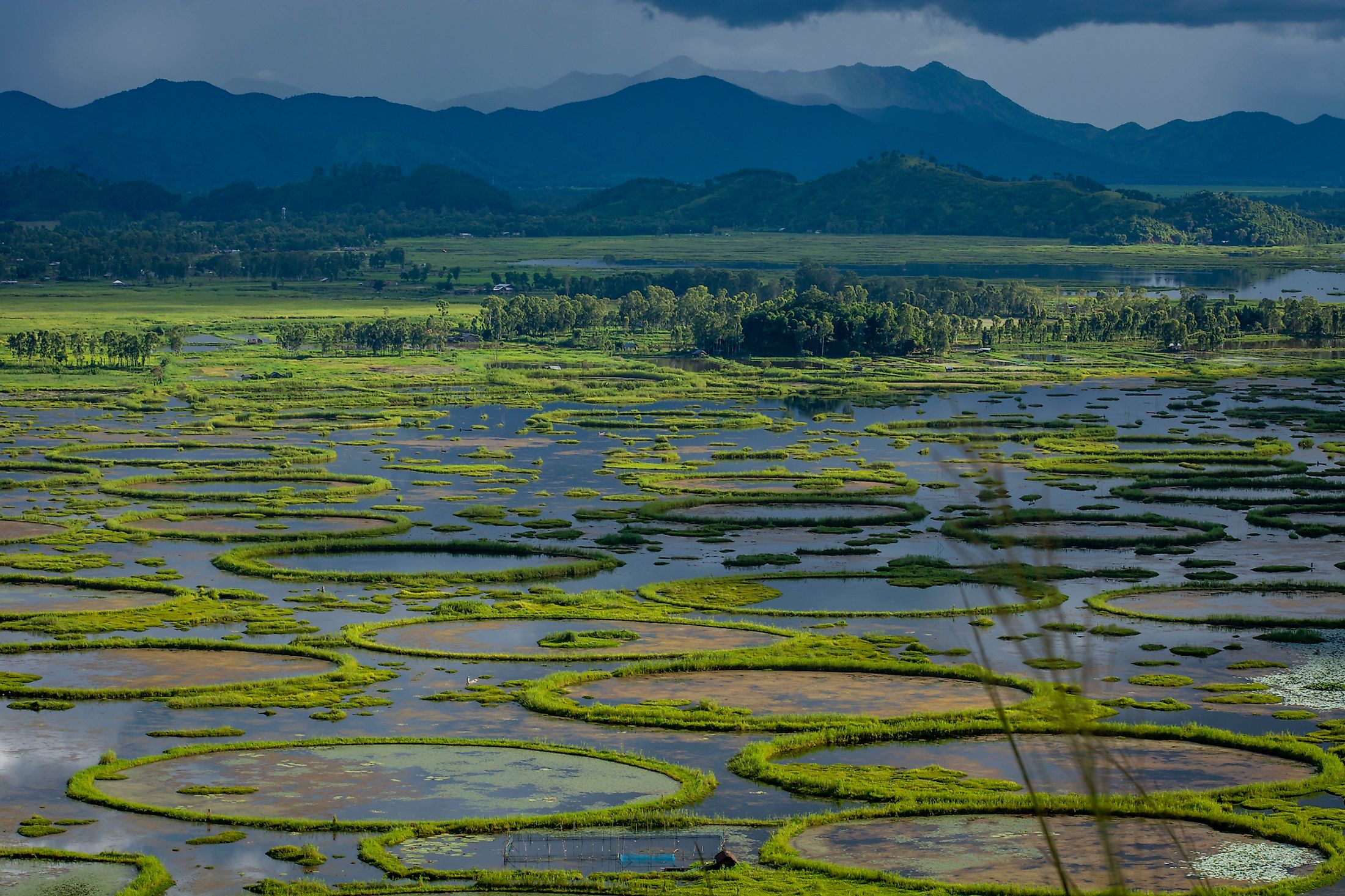
Loktak Lake
Loktak Lake is the largest freshwater lake in Eastern India. It is located in State of Manipur, in the north east of India near the Myanmar border. The lake has a surface area of around 287 square kilometers. Loktak is also considered a pulsating lake, meaning the water levels vary significantly (from roughly 287 sq.kms to 500 sq kilometers) with the seasonal rains.
Waterways
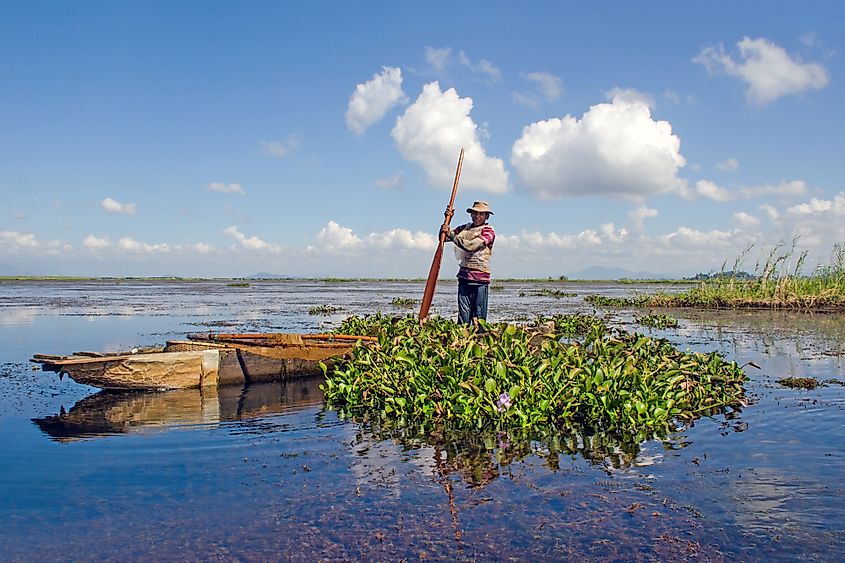
Loktak Lake’s main inflow source is the Manipur river. Its outflow is through the Ungamel Channel. Other major streams which flow into Loktak include the Nambul, Nambol, Thongjarok, Awang Khujairok, Awang Kharok, Ningthoukhong, Potsangbam, Oinam, Keinou and the Irulok.These smaller streams and tributaries bring water as well as significant amounts of silt into the lake, as Loktak sits at the lowest elevation within the surrounding valley. The Manipur River basin has also been developed as a resource for irrigation. Several dams have been completed along the river, most of which have the main purpose of irrigation, but the Loktak Multipurpose Project also aimed to provide hydropower. This project, however, has faced backlash as it has been associated with harmful side effects which could threaten the nearby wetlands.
Phumdis
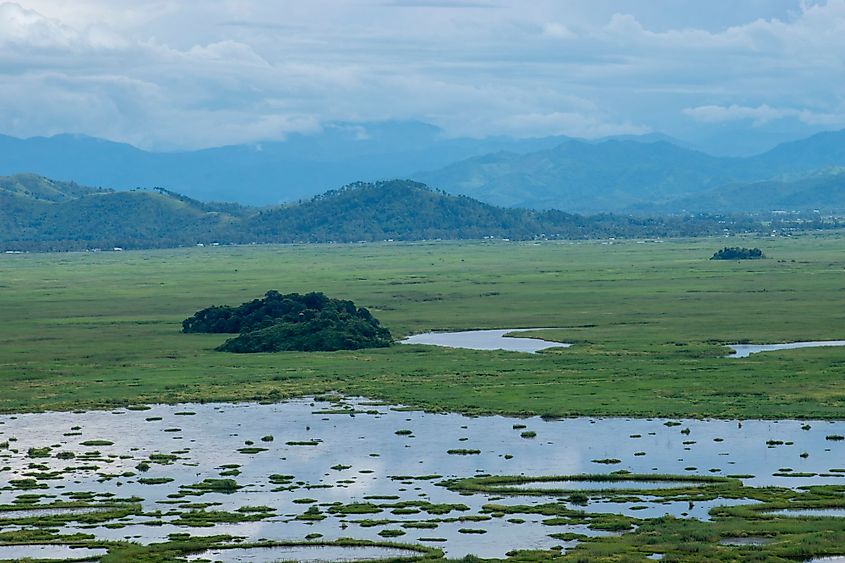
Aside from being a pulsating lake, Loktak is famous for its phumdis. The Phumdis are a name given to masses of soil, plants and organic matter that are bound together by roots, and float upon the water’s surface. These vegetation islands are large and relatively stable. Because of their size and density, animals can roam on these islands, taking refuge from the surrounding lake waters. The largest recorded phumdis measures 40 square kilometers, and actually contains an entire National Park known as Keibul Lamjao National Park. This is the only floating national park in the world. This Phumdis-based park is home to the endangered subspecies of Eld’s deer known as the Sangai, which is also the State Animal of Manipur. These deer take refuge from the surrounding lake waters and predators on this and other floating plant masses.
Flora
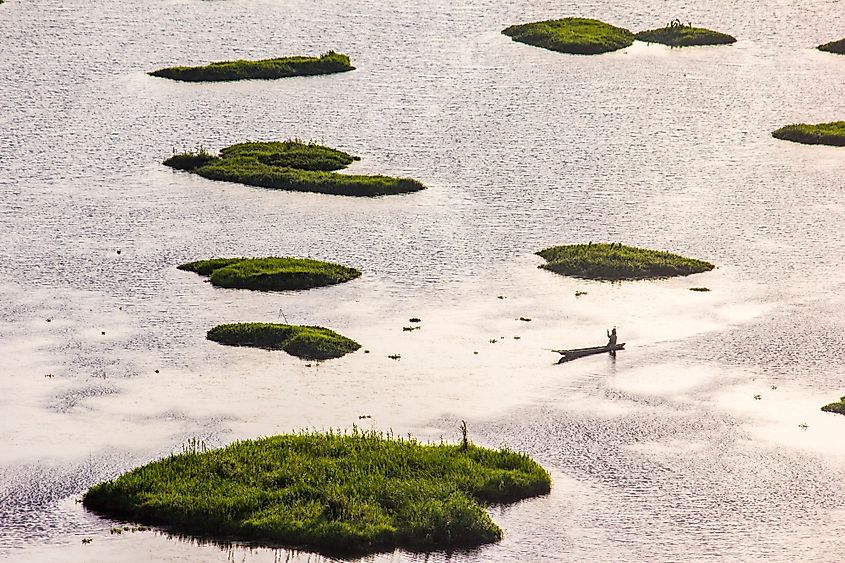
The nature of the lake - both as a pulsating lake and one with floating vegetation-based islands lends itself to being a rich and biodiverse area. Some 233 species of aquatic macrophyte plants can be found here, some free-floating, some submergent, emergent or rooted floating leaf types. The Phumdis themselves are made up of a variety of plants, including primarily: water hyacinth, reed grasses, Oryza sativa (or Asian rice plant), Manchurian wild rice, dog tooth grass, Limnophila (marsh weed), various types of Sagittaria (such as swamp potato), broomsedge grasses, swamp rice grass, and carex grasses. All of these plants grow well in wet conditions, and have strong binding roots that help hold the phumdis together.
Fauna
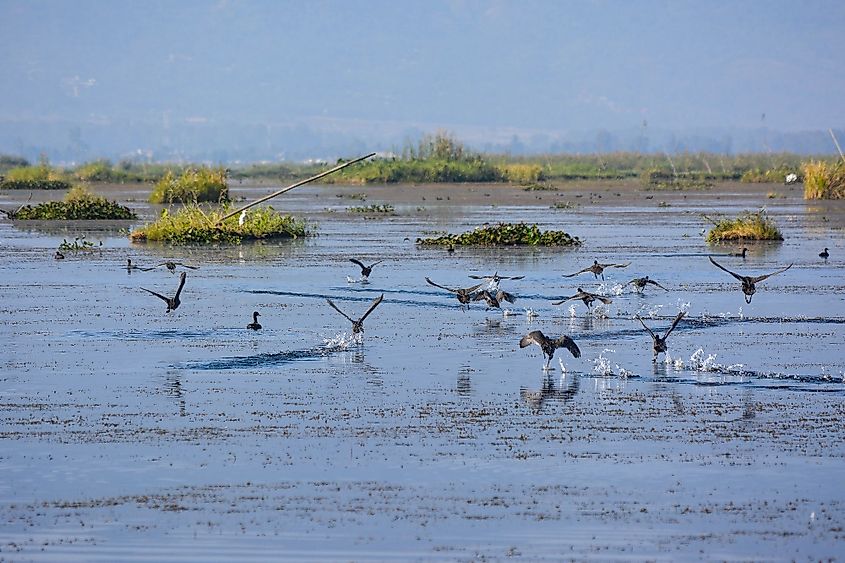
There are a number of animals that live in, around and on the lake from mammals to waterbirds. Some 57 species of waterbirds and 14 species of wetland dwelling birds can be found in Loktak Lake, including various types of ducks; rufous-necked, wreathed, pied and brown-backed hornbills; kites; and marsh harriers. Eld’s deer are also common, especially in the Keibul Lamjao National Park, as well as the highly endangered brow-antlered deer, sambar and barking deer. The rhesus monkey, hoolock gibbon, stump tailed macaque and Indian civet also call the Loktak home, as do both the marbled cat and Temminck’s golden cat. Various reptiles also can be found in the area, such as the Indian python, as well as a large number of fish species like grass carp, silver carp, pangba, tharak, ukabi and ngaril.
Threats
Unfortunately the habitat of Loktak lake is under threat. Major construction projects in the area have resulted in a loss of vegetation and catchment areas for the lake, as well as increased soil erosion in the surrounding area due to deforestation. This erosion has in tuern caused the lake to shirk, as it has filled with considerable amounts of extra silt and natural debris. Additionally, nutrients and sewage in nearby catchment areas have begun to alter the composition of the lake, and in turn decrease the stability and density of the floating islands within it. Similarly, the construction of the Ithai barrage means the reservoir is constantly at peak containment, and the increased water quantity is throwing off the natural ecological processes in the wetland areas. Biodiversity is being affected as well as the delicate balance within this unique ecosystem.
The Need To Protect
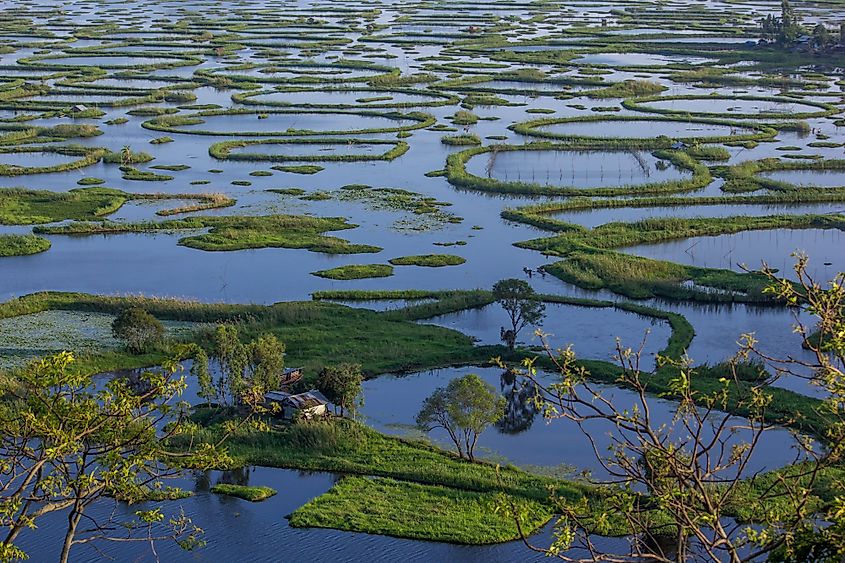
Loktak lake is a unique and beautiful ecosystem full of life and diversity. It is popular with both human tourists and various animal species, and is home to the astounding natural phenomenon of the floating plant islands. But if this and other places like it are not protected from human industry and expansion, these beautiful and important ecosystems will be altered beyond repair or lost.











